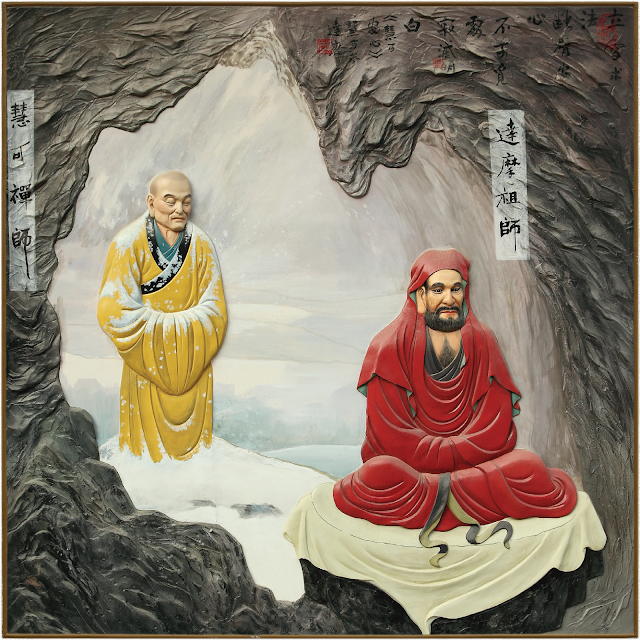The Zen rebels: obscure hermits and existential reformers (part 9). Japanese Zen Philosophy (part 3)
(Images from the Public Domain - Internet)
What I find so enticing of the Daruma-Daishi (Bodhidharma) doll or simply the Daruma Doll. Is the Japanese inherent ability no matter how they are perceived, as far being a country that has always stood by isolationism – to take something foreign, such as the legendary figure in Zen Buddhism, such as Bodhidharma and fuse into their own traditions the story of a fierce and determined monk from India, who as legend has it, meditated in a cave for 9 years. Understanding the literal meaning of the Lakāvatāra Sūtra, that the core aspect of enlightenment is essentially a rejection of reality and the self, whilst embracing the self and reality. The clearing of the mind and its myriad of thoughts, solving the dilemma of duality. That we are whole and separate at the same time. To attain and cross that bridge into enlightenment. To become, what the Buddhists would call the Buddha nature and returning to the original mind. As, we have seen, with Chinese Ch'an in its early stages in China, attaching to Taoism, utilizing the principles of Taoist Philosophy in the early teachings of Zen in China. And this is how Zen evolved, into incredibly detailed and rich Buddhist practice. Yet, when I look at these dolls, their open eyes, which are purposefully left blank as a visual reminder of Bodhidharma's stare. There is the simplicity of non words in actions, to keep practicing, to maintain the path. No matter how hard and difficult it maybe. You don't give up. Encompassing at the same time what the Japanese mean by Ganbaru which is to maintain the 'perseverance'.
So, we have Japanese superstition and Zen, becoming drawn into in concept that remains alive to this day. Even though, Japanese Zen may not be a prolific as it once was, fading out from the 1950s through to the 1980s. Japan hasn't completely discarded its Zen roots, and seeing these dolls and how important is it in Japanese culture. It is that reminded that the core beliefs of Zen, of mental conditioning and cultivation still holds an appeal.
The eyes, are filled in by the person who purchases the Daruma Doll, with each coloring of the eye, usually in black. Is an action to be fulfilled, beyond a wish or desire, but an accomplishment. Once adversity has been overcome, then the other eye is filled in. The Doll than takes its place in the home or the business, as a reminder resilience. This armless and legless doll, in an almost macabre representation portrayed by Bodhidharma, who after nearly a decade of meditation – staring at the cave inner wall, the Japanese added a layer of myth to the 1st patriarch of Zen Buddhism, telling the story that his arms and legs fell away and his eye lids removed. As he further became the embodiment of transcendence.
Which leads us to the beginning of the Japanese Zen rebels: obscure hermits and existential reformers, starting with a legend in Japanese Zen: Ikkyu



Comments
Post a Comment